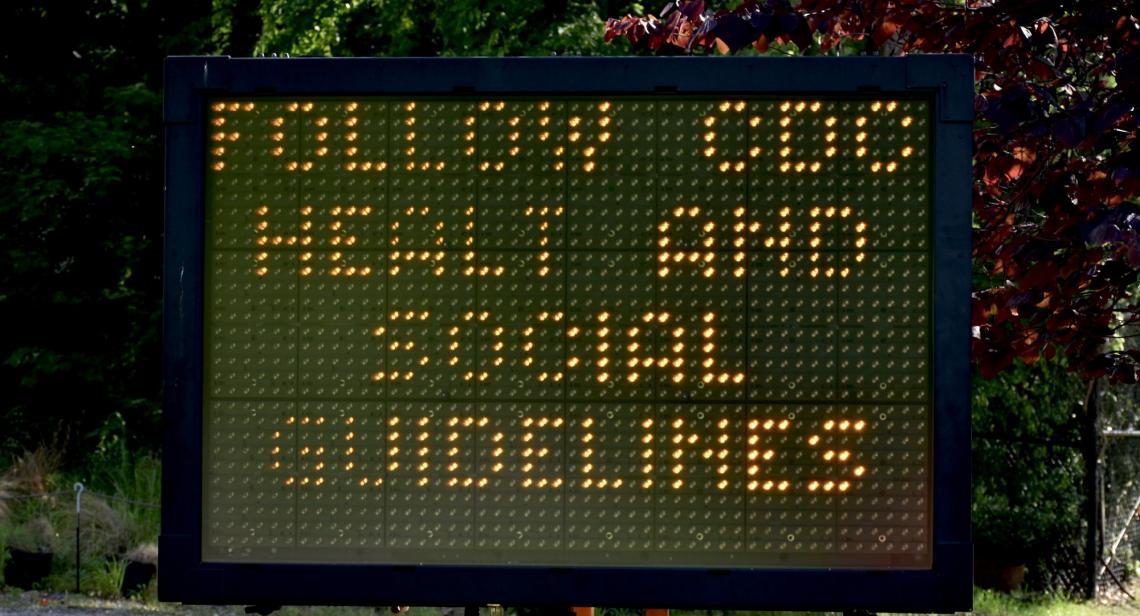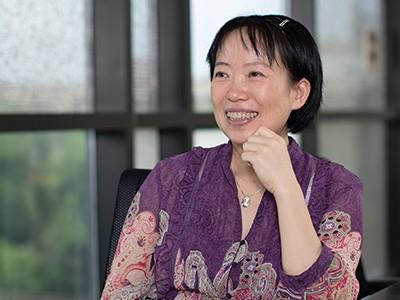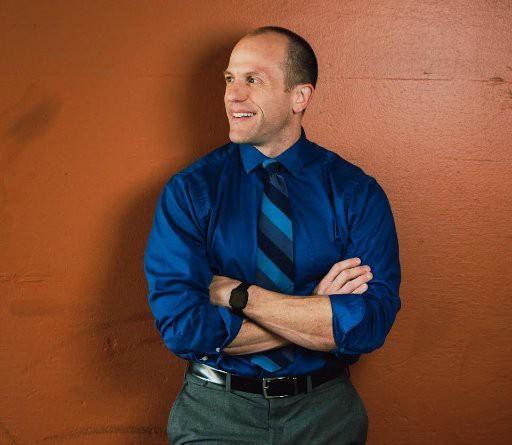
COVID-19’s health impacts are clear now. The symptom list grows. Infection rates increase. Hospitals become overcrowded. The death toll mounts.
But alongside this obvious health crisis, another crisis is brewing — one that is, in many ways, nearly as serious. It’s an information crisis.
In our global society, connected by a web of different government structures, we struggle to get the information we need quickly enough. What was true in yesterday’s news cycle becomes questionable as scientists and public health experts learn more about the virus. People seek answers. Should we wear masks? Wipe down our groceries? Shelter in place? The answers can be confusing and contradictory. At its worst, misinformation could lead to increased virus spread, leading to more deaths.
University of Texas researchers argue that information scientists have a bigger role to play in the crisis because of the proliferation of conflicting messages. They outline their ideas in a recent opinion paper published in the Journal of the Association for Information Science and Technology. We asked three of the authors, who have been sheltering-in-place for the past two months in Austin, Texas, to tell us more about their perspectives on the pandemic.

BO XIE
Professor, School of Nursing and School of Information
I have been following the pandemic since January because I am originally from China. It’s been a very emotionally draining past few months.
I will never forget the day, Friday the 13th. It was the day President Trump declared a national emergency. When we woke up in the morning, we got the email from the UT president saying his wife was diagnosed. That was also the day my husband and I decided to stop going out of the house. We have been in self isolation ever since with our children. Thinking of how many people will lose their jobs, their health insurance, people who can’t go to school — it’s very upsetting.
On the academic side, I felt from the very beginning that this global health crisis was an information crisis. People at all levels did not have the accurate and complete up-to-date information that they should to make informed decisions for themselves and their loved ones. Had there been better information management, things would have gone much better.
From the information science perspective, we can play a supportive role in helping scientists and epidemiologists make better decisions. There are a lot of things we should be able to contribute, including better information guidance, better information infrastructure, and better information exchange.
For example, despite years of efforts at all levels promoting interoperability and health information exchange, today’s hospital computer systems still don’t really talk to each other. If there were a way public health records could be linked, we could identify people at high risk, including adults age 80 and older and people with underlying health conditions, and provide better support to them. We could also track public health through social media. There is already preliminary evidence showing that social media data alone could have predicted the H1N1 pandemic in 2009 at least two weeks prior to the U.S. Centers for Disease Control and Prevention knowing about it. If we could use AI algorithms to detect patterns or pick up on early cues in so-called online “rumors” — which later turn out to be facts — we could provide that information to the CDC and public health officials to make informed decisions.
In my own research, I have been focusing on improving e-health literacy, which is the ability to access, assess, and use electronic information to make decisions. This is at the individual level to help train people to discern the bad information from the good. We particularly need to pay attention to vulnerable populations, like older adults, ethnic minorities, people with disabilities, and people experiencing homelessness — to name just a few — to make sure they get the information and assistance they need.
During pandemics like COVID-19, older adults are in triple jeopardy. They are more likely to develop severe conditions. They are also less likely to know how to use technology to do things like online shopping or telehealth, which puts them at another disadvantage. And, even under normal circumstances, they are already at risk of social isolation, which is a major risk factor for depression and anxiety. It’s really important we find ways to make a difference.

KEN FLEISCHMANN
Professor, School of Information
Things have been chaotic. It’s horrible seeing thousands of people around the world dying and this country being hit very hard, which is extremely tragic.
However, I’m compelled — rather than sitting back and gazing at the spectacle — to try to make sense of the situation and to see if there is anything that I can do to contribute to a solution based on my training.
Putting on my information scientist hat, one of the things I’ve noticed is that, due to our rapidly evolving scientific understanding of this pandemic, we are seeing enormous shifts in our thinking — from not wearing masks to wearing them but from assuming that things would magically get better in April to seeing a death toll that same month that exceeded that of the Korean War. It is the kind of change in scientific knowledge that would typically take decades.
I think what we are witnessing is a paradigm shift — a shift in science from gradual, incremental progress to a radically new insight that triggers a whole revolution in our way of thinking. And we are seeing it across many different fields at once: virology, immunology, economics. I don’t think we’ve come to terms with the impact this pandemic will have on any field. We are still living in the moment. The information we get and the data available to us are changing on a daily basis.
On top of that, we have never had a pandemic of this scale in such a globalized society, with the proliferation of 24-hour news media on TV and the internet and widespread adoption of social media. Leading experts give their best understanding of the data available to them at the time, but those data change. What was yesterday’s information is now misinformation. That is the challenge of trying to decide what is information and what is misinformation. To some extent, it depends on when and whom you’re asking.
There are lot of models that predict how many fatalities there will be, what the high point will be for this pandemic. There is wide variation among models at a given time and for the same model over time. For example, in less than a week, the COVID-19 model from the Institute for Health Metrics and Evaluation at the University of Washington predicted overall death toll in the US almost doubled. But the everyday person doesn’t understand the basis for these models. We have to remember they are built by people. They have lots of data and complex algorithms, but because they’re built by humans, they are sometimes going to err in one direction or another. No one is perfect and nothing is perfect. A model is, by its nature, an abstraction — a simplification — and it cannot possibly match the messiness of reality.
One concrete solution is to try to make the models more transparent. Make it clear that the model is not a crystal ball. Make clear the assumptions of the model. Make clear the track record of the model. We won’t know how accurate models are until after the fact, but we can at least use their past track record as an indication of their future accuracy.
That’s not to say models aren’t useful or that people should ignore them. We just need to exercise appropriate judgment in how we interpret models and convey their results. At the end of the day, you have to treat all information critically. Our best good faith information might turn out to be different than it was even a week ago.

MIKE MACKERT
Professor, Moody College of Communication
Professor, Dell Medical School
Director, Center for Health Communication
For me, things really ramped up the Friday that UT shut down. I got a couple phone calls and emails from people at Dell Medical School and around the state, asking what the Center for Health Communication could do to help. It was not the answer for us to start creating COVID materials. We are not experts in COVID. What we have been doing is running a thread on Twitter, pulling messages we like and highlighting them — ads targeted to specific groups that really communicate the vulnerabilities for all populations. We understand that all health messaging isn’t created equal.
Part of the problem in the United States is that we have so many levels of government — national, state, county, city. Everyone is doing it in the way that makes sense for them. There is no coordination. So many organizations all creating a physical distancing graphic isn’t efficient, and there isn’t a great system to test and disseminate these messages.
Also, there’s so much we don’t know. Something we thought made sense two weeks ago now changes pretty dramatically. It’s not people purposely giving misinformation, though. They are doing their best. We didn’t know if the virus could live on surfaces — on aluminum or cardboard, for example — so it was hard to give guidance on whether we needed to wipe down groceries. The public wants answers to questions. Experts want to give those answers, but we just don’t always have them right away.
For news consumers, it’s important to practice balanced media consumption. Vary your news sources. Look for multiple sources saying the same thing.
On the research side, we can invest now to create better health messaging, rather than wait for the next crisis or pandemic. At UT, we did a hand hygiene class project in partnership with Healthy Horns in 2008, which led to a research project, then another, and eventually, the Texas Department of State Health Services adopted a hospital-based campaign we developed. We didn’t do this 10 years ago knowing there would be a pandemic. The value of basic science in the university doesn’t always seem clear and then, when a crisis like this happens, it all makes sense. For example, Lauren Ancel Meyers, who has been modeling the spread of COVID-19, has been working on flu models for years. She didn’t build a model in a weekend. UT, overall, has been able to spring up and help with the response in Central Texas because the basic science has been going on for a long time. I will say, if people didn’t previously think that health communication was of interest, they do now.
Bo Xie, Ph.D., professor in the School of Nursing with a joint appointment in the School of Information, is a researcher with the Good Systems grand challenge, working to develop technology that can help the visually impaired use mobile devices to get information. In response to the COVID-19 pandemic, she has been working with local organizations to create a database of older adults in order to connect them with volunteers for information, services, and social inclusion.
Kenneth R. Fleischmann, Ph.D., professor in the School of Information, is the Founding Chair of the Executive Team for Good Systems, a UT Grand Challenge. He studies the ethical complexities of AI and ways to identify and mitigate AI bias, especially in relation to already disadvantaged groups. He is leading a research project funded by the National Science Foundation that aims to determine the factors that influence trust in public health information during the COVID-19 pandemic.
Michael Mackert, Ph.D., professor of health and medical science communication in the Moody College of Communication, is part of UT’s Whole Communities–Whole Health grand challenge, working to understand what kind of data portal would best relay information about indoor air quality to research participants from underserved communities in Del Valle. He has created opioid misuse campaigns and created a mobile application to give parenting information to new fathers.

